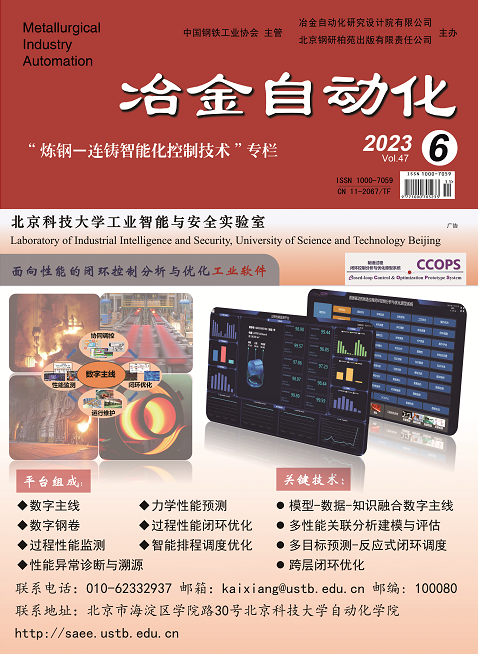Special column on intelligent control technology for steelmaking and continuous casting
ZHOU Tao, SHAO Xin, GAO Shan, LI Shaoshuai, LIU Qing
Aiming at the rescheduling problem after the failure of a smelting equipment in the steelmaking-continuous casting production process,in order to ensure the stability of production and reduce the variation of the rescheduling scheme compared with the initial scheduling scheme,a rescheduling model was proposed with the objective of minimizing the weighted variance of the start time,operation cycle and equipment assignment,which was established by mathematical planning method.By analyzing the production operation mode and production process of a steel plant,a rescheduling algorithm was proposed,which consists of an equipment assignment algorithm based on the "furnace-caster coordinating" scheduling strategy rule and a time adjustment algorithm based on the process flexible buffer control strategy rule.Taking the converter equipment failures or refining furnace equipment failures that often occur during the actual production of steelmaking and continuous casting in a large domestic steel plant as simulation samples,the experimental results indicate that the total weighted differences between the start time,operation cycle and equipment assignment before and after scheduling were 0.29,1.43,and 1.21,respectively,which can effectively maintain the consistency between the rescheduling plan and the initial scheduling scheme,and ensure the stability of production.And the solution time was less than 0.6 s,which can quickly provide better solutions to the rescheduling problem after smelting equipment failures.In the actual production process with frequent failures of smelting equipment,the orderly,stable,and efficient operation of steelmaking-continuous casting can be ensured.
